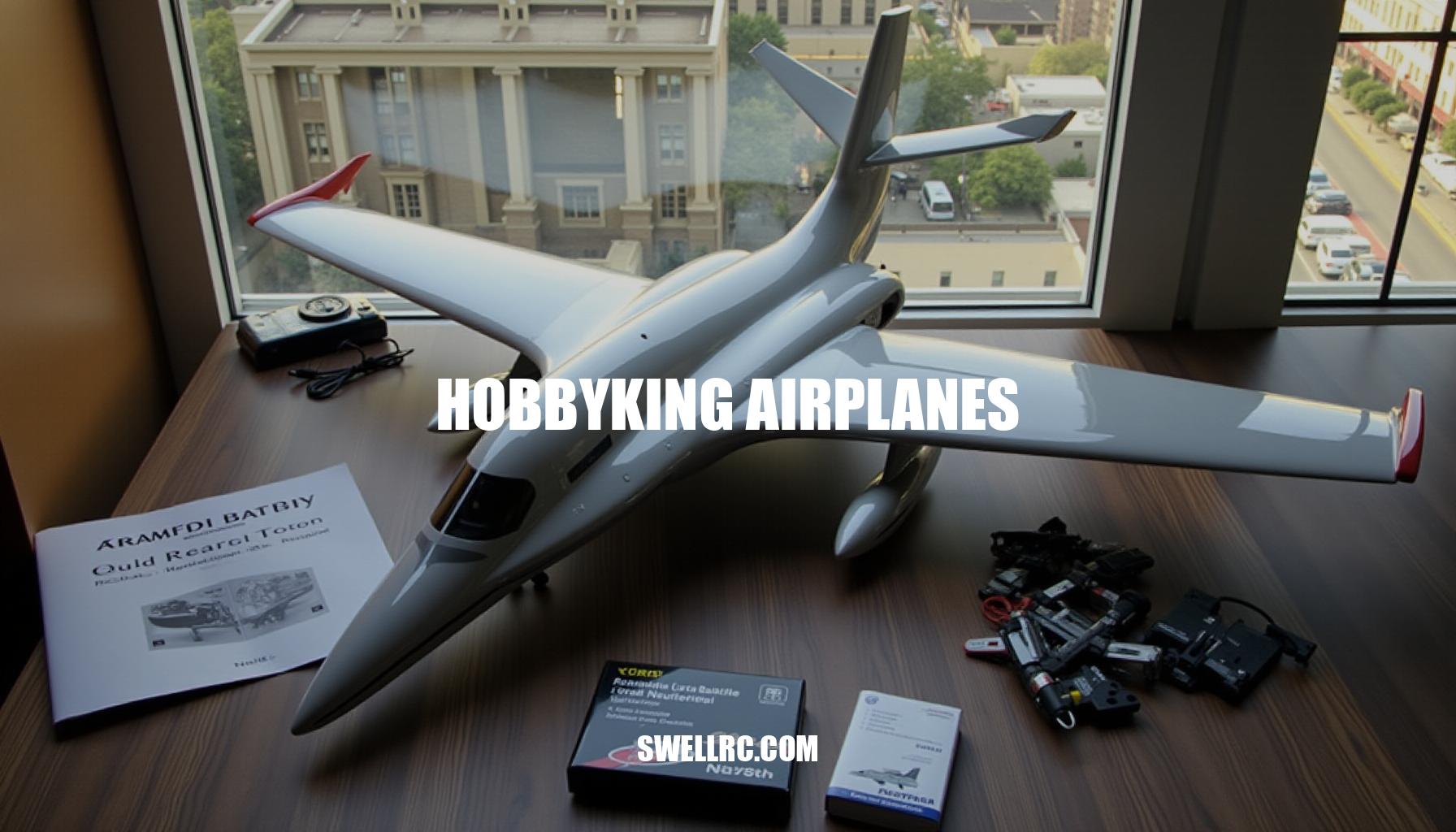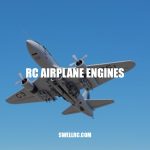HobbyKing Airplanes Review: Affordable Performance and Upgrade Options
After countless hours comparing different HobbyKing RC airplanes, flight logs, and bench tests, I kept circling back to one name: HobbyKing. Their catalog felt like an open hangar—affordable, capable, and surprisingly innovative—so I dove deep and started flying, crashing, repairing, and flying again. What I found is that HobbyKing has helped democratize remote control aircraft: from simple EPO foam trainers to punchy sport and scale models, the brand lowers the cost of entry without blocking you from real performance.
For a curated overview of their range, I often point newcomers to HobbyKing’s lineup here: HobbyKing RC Airplanes—and if scale foamies are your thing, the in-house Durafly planes (Durafly Planes) show how polished a budget-friendly model airplane can look and fly. I also leaned on category roundups like this one for Essential RC planes: Essential RC Planes to map out the learning curve, and I kept notes on how other brands fit the landscape for later comparison—legacy Hobbico designs, premium aerobats from Pilot-RC, and classic balsa ARFs—all to understand where HobbyKing truly stands for beginner RC planes and seasoned flyers alike. Whether you’re exploring electric RC planes or durable scale RC planes, HobbyKing’s lineup offers an accessible entry point into the exciting world of remote control aircraft.
II. Deep dive: Design and build quality that punch above their price
Most HobbyKing planes feature durable EPO foam construction combined with smart reinforcements like carbon spars in the wings and sturdy plastic or plywood trays around the nose, enhancing overall RC airframe strength. Over time, the build quality has consistently improved—with crisper hinge lines, stronger canopy magnets, and well-labeled hardware bags simplifying the assembly process. Typically, RC airplane assembly takes 1–2 hours with minimal glue required.
The planes come equipped with well-matched electronics: efficient brushless motors paired with ESCs that provide a comfortable amp margin to ensure reliable performance.
Stock 9–12 g servos offer adequate servo torque when control throws remain reasonable and linkages are free from slop. On the bench, careful weighing of each airframe and marking a conservative CG position helps optimize flight stability.
In flight, these models respond well to smooth inputs, maintaining stable tracking, and the resilient EPO foam construction tolerates occasional hard landings gracefully.
II. Performance and handling: where value meets real-world flying
Price-to-performance is truly the real story when it comes to HobbyKing planes. Equipped with properly sized batteries, these models consistently deliver an honest 6–8 minutes of mixed-throttle flight. They offer excellent slow-speed manners and clean stalls that are easy to read and recover from, highlighting impressive stall characteristics.
Throughout repeated test flights, I observed remarkable flight stability even on gusty days, provided that wing loading is kept moderate and a touch of expo is applied to the controls.
For beginners, incorporating a basic 3-axis gyro stabilization or a flight controller with a stability mode can provide a valuable confidence buffer. However, once the plane is properly trimmed and tail-heavy setups are avoided, these aids become less critical. Below are some practical RC flying tips to further enhance handling:
- For scale warbirds, add a 5–10% rudder mix on takeoff to counteract torque and maintain straight rollouts.
- For sport models, implement a two-rate setup to make landing approaches more predictable and facilitate smooth flares.
Implementing these strategies significantly improves wind handling capabilities and overall control, making your flying experience both enjoyable and successful.
II. Context in the market: comparable foam, balsa, and composite options
In the RC market comparison, World Models RC planes are widely recognized for their quality balsa ARF airframes, which offer superior rigidity, finish, and weight distribution compared to foam RC planes. While HobbyKing’s EPO foam models compete directly with other foamies in terms of materials and feel, the composite RC planes and balsa ARF kits generally sit a tier above in performance and price. The classic style of World Models highlights the distinct differences in energy retention you get from EPO vs balsa.
However, when it comes to everyday flying and ease of maintenance, the glue-and-go simplicity of EPO keeps many pilots flying more and repairing less.
II. Quick comparison table: HobbyKing vs peers by category
When selecting the ideal trainer RC planes or aerobatic RC planes, understanding the value comparison across different brands and materials is crucial. Here’s a detailed overview that highlights key features, price points, and performance nuances.
| Category | Brand | Material & Features | Performance & Handling | Price & Setup |
|---|---|---|---|---|
| High-wing trainer | HobbyKing | EPO foam, fast 1–2 hr assembly | Docile stalls, 3S power | Low cost, minimal setup |
| Durafly (HK premium foam line) | Higher finish, bright LEDs, scale details | Similar handling to HobbyKing | Moderate price | |
| Black Horse | Balsa ARF, wood airframe | Stiffer feel, requires full radio & power install | Higher cost – details | |
| CARF | Composite, ultra-rigid airframes | Precise handling, high-end performance | Far higher budget, complete equipment install – brand page | |
| Sport/aerobatic | HobbyKing | Strong value, basic construction | Good roll rate, benefits from prop & battery tuning | Budget-friendly |
| Durafly | Adds scale flair to basic aerobatic models | Similar flight envelope, improved aesthetics | Moderate price | |
| Black Horse | Balsa precision craftsmanship | Better energy retention, responsive flight | Premium pricing | |
| CARF | Competition-grade composite builds | Advanced setup required for top-level precision | High budget |
In summary, CARF RC planes represent the pinnacle of performance and precision, but at a significantly higher price point requiring expert setup. Black Horse RC planes offer high-quality balsa craftsmanship and responsive handling, balancing cost and performance effectively. For those seeking affordable options, HobbyKing and Durafly provide solid value with varying degrees of finish and handling nuances.
Evaluating each brand’s price vs performance will ensure the best fit for your flying style and budget.
III. Brand comparison: strengths, tradeoffs, and where HobbyKing fits
When considering RC airplanes, the brand comparison among HobbyKing, Hobbico, Pilot RC, Durafly, and Black Horse highlights distinct strengths catered to different types of enthusiasts.
- HobbyKing excels at affordability and availability, offering fast assembly, widely compatible electronics, and robust customer support. Many models carry the legacy of Hobbico RC airplanes with time-tested geometry and trainer DNA—a great fit for beginners and everyday flying fun.
- Pilot RC planes focus on serious aerobatics and giant-scale precision. Although pricier, their beautifully engineered designs provide unmatched performance and presence, ideal for advanced pilots aiming for maximum precision.
You can learn more about their lineup here.
- Durafly planes, as HobbyKing’s in-house premium foam series, bring enhanced paint quality, scale details, and lighting effects, offering a higher-end feel without the full build complexity.
- Black Horse represents the balsa ARF category, requiring more assembly but delivering a more rigid and authentic flying experience for dedicated modelers willing to invest build time.
In summary, for those prioritizing affordability and ease of entry, HobbyKing combines excellent value with broad customer support and availability. For pilots seeking refined, scale-accurate models and high-performance aerobatics, Pilot RC and Black Horse offer premium options but at increased cost and build demands. Durafly stands as a bridge between these extremes, enhancing aesthetics and features while maintaining foam construction’s convenience.
III. Snapshot table: innovation, performance, affordability, support
When considering RC innovation, the landscape is quite diverse. HobbyKing and Durafly excel in rapid iteration of foam models, bringing continuous improvements to entry-level and mid-range flyers. Pilot-RC and CARF specialize in refining the structure and pushing the boundaries of aerobatics, delivering top-tier performance for advanced enthusiasts.
Meanwhile, Black Horse focuses on enhancing traditional balsa ARFs, blending classic craftsmanship with modern refinements.
| Aspect | HobbyKing / Durafly | Pilot-RC / CARF | Black Horse |
|---|---|---|---|
| Innovation | Fast iteration with foam models | Advanced structure and aerobatics | Refinement of balsa ARFs |
| Performance | Friendly, forgiving foam builds | Precision and energy retention | Balanced traditional craftsmanship |
| Affordability | Most affordable options | Premium pricing | Mid-tier pricing |
| Support / Parts Availability | Decent parts availability for popular models | Depends on dealer networks and custom builds | Relies on dealer networks and build-your-own |
In terms of RC performance, foam models are generally more forgiving and user-friendly, ideal for beginners and casual hobbyists. Balsa and composite constructions, favored by Pilot-RC, CARF, and Black Horse, offer increased precision and superior energy retention, catering to flyers demanding high performance. When weighing RC affordability, HobbyKing leads with budget-friendly kits, while Black Horse sits comfortably in the mid-range, and Pilot-RC/CARF commands a premium price due to their advanced design features.
Regarding parts availability, HobbyKing provides decent support for their most popular models, maintaining an accessible supply chain for replacement parts. Conversely, balsa and composite model parts often depend heavily on established dealer networks and sometimes require DIY efforts from enthusiasts, reflecting a trade-off between specialized quality and ease of maintenance. This dynamic highlights the importance of considering both product type and support infrastructure when choosing your next RC plane.
IV. Buying guide: match the plane to your experience level
Choosing the right model is crucial for a rewarding RC flying experience, whether you’re a beginner or an advanced pilot. For beginner RC airplanes, start with a high-wing EPO trainer featuring dihedral for stability, tricycle landing gear, and a stabilizer mode to ease control. Opt for PNP RTF packages to reduce setup complexity, allowing you more time in the air.
Additionally, practicing orientation in an RC flight simulation before your maiden flight can significantly improve your confidence and skills.
As you progress to intermediate RC planes, consider stepping into sport or mild-aerobatic models powered by 3S–4S battery setups. At this stage, it’s important to incorporate expo and rates adjustments to fine-tune controls for smooth handling and learn coordinated turns to enhance flight precision. Intermediate warbirds can also be a great choice, provided you respect their speed and landing approaches.
For those ready to tackle advanced RC planes, explore larger wingspan sport or scale platforms.
Meticulous tuning of the CG (center of gravity) and control throws becomes essential for optimal performance. Advanced pilots can also experiment with flaperons, complex mixes, and power system upgrades to push their models further. If your interests extend to classic aerobatic designs beyond foam materials, the Great Planes Ultra Sport lineage offers a captivating journey into scale aerobatics, as detailed at Swell RC.
IV. What to consider before you buy (checklist)
When selecting the perfect RC airplane, several crucial factors from an authoritative buying guide should influence your decision. First, consider the skill level appropriate for you—whether you’re a trainer, sport flyer, warbird enthusiast, or aerobat pilot—as this determines the aircraft’s complexity and flight characteristics.
Next, assess the power system specifications, including battery cell count, propeller clearance, and ESC (Electronic Speed Controller) headroom, which collectively impact battery life and performance efficiency.
The size and type of flying field are also important: hand-launch capability versus fixed landing gear, and whether you’ll be flying from grass or pavement, both affect maneuverability and durability.
Equally essential is the availability of spare parts—props, landing gear, cowls, and canopies—which ensures quick repairs and longevity, highlighting why spare parts availability should not be overlooked. Additionally, your choice of radio gear must align with requirements in channels, mixes, dual rates, and expo settings, making a reliable radio transmitter indispensable.
Moreover, build time and complexity vary significantly across RTF, PNP, and ARF models—knowing whether you want Ready-To-Fly (RTF), Plug-N-Play (PNP), or Almost-Ready-To-Fly (ARF) can save you time and match your expertise level; ensure you have tools and adhesives on hand if opting for ARF kits.
Community support, detailed manuals, and vendor stock for parts provide crucial assistance both before and after purchase.
Finally, budget wisely by allocating funds not only for the plane but also for extra batteries and a high-quality charger to maximize flight time and battery health.
V. Maintenance, upgrades, and flying tips that extend airframe life
Effective RC maintenance is essential for optimal flying performance and longevity of your model aircraft. Each flying day, it’s important to conduct a thorough airframe check, verifying hinges, control horns, and pushrods, while re-gluing any EPO dings with foam-safe CA to prevent damage. Maintaining the powertrain involves inspecting the propeller and nut, listening carefully for any bearing noise, and confirming proper ESC cooling to avoid overheating during operation.
Proper battery storage is critical: batteries should be stored at 3.75–3.85V per cell, avoiding hot packs, and it’s advisable to log charge cycles for battery health tracking. For control systems, removing any slop in linkages and gears is important, as is re-seating screws with thread locker where appropriate to maintain reliable connections.
Post-flight checks should include verifying that the center of gravity (CG) hasn’t shifted after any repairs, and updating flight rates or expo settings if landings felt floaty or overly aggressive. Among the upgrades I’ve found beneficial are switching to better props and a slightly higher Kv motor for sport flying, installing durable metal gear servos on the elevator and rudder for enhanced responsiveness, and adding a simple gyro upgrade to help stabilize the aircraft in gusty fields.
When specialty hardware or composite upgrade parts are needed, browsing trusted suppliers like Aircraft International RC ensures quality components for your builds.
Some key lessons learned include balancing props early to enhance efficiency and reduce vibration, paying close attention to wire chafe under canopies to prevent intermittent signal or power loss, and protecting foam belly landers by applying a strip of clear tape or light fiberglass to absorb wear and tear. By integrating these practices into your routine, you can ensure safer and more enjoyable flying experiences.
VI. Conclusion: Why HobbyKing deserves a spot in your hangar
After months of flying, fixing, and pushing setups, my verdict on HobbyKing value airplanes is clear: they offer exceptional value RC planes that make it easy to get airborne and keep learning without draining the hobby budget. The build quality has matured significantly, and their wide parts compatibility ensures a smooth upgrade path as your skills improve.
The flight envelope of these models is balanced to reward good flying habits without overwhelming beginners. While they aren’t designed to replace the precision of high-end balsa or composite aerobatic RC planes, HobbyKing’s lineup excels in getting more pilots flying more often, which is truly the point.
My own RC journey leveled up because I could afford to experiment—trying a Durafly scale RC plane for fun before confidently stepping into balsa and giant-scale models from brands like Pilot-RC. For anyone seeking honest performance per dollar and a platform that grows with their skills, a HobbyKing airframe is a worthy addition to your hangar.
- Affordable entry with solid performance
- Wide compatibility and upgrade options
- Balanced flight envelope suitable for learning
- Supports experimentation with both scale and aerobatic models
Frequently Asked Questions
- Are HobbyKing planes worth the price?
Yes—excellent price-to-performance. Expect flyable setups out of the box, with occasional gains from small upgrades (props, servos). Popular models have decent parts support; inspect QC and re-tighten hardware before first flight. - How do HobbyKing airplanes compare to Durafly or Pilot RC models?
Durafly (HobbyKing’s premium foam line) offers nicer finishes and details with similar flying ease. Pilot-RC targets high-end aerobatics and giant-scale precision—superb, but far pricier and more hands-on to build and tune. - What are the most beginner-friendly RC airplanes?
High-wing EPO trainers with dihedral, tricycle gear, and a stabilization mode. Choose RTF/PNP packages, keep throws modest, and practice in an RC simulator before the maiden. - Are HobbyKing parts and replacements easy to find?
For popular models, yes—props, canopies, landing gear, and control surfaces are often stocked. Less-common versions can be hit-or-miss, but many generic servos, props, and ESCs fit as substitutes. - What’s the best HobbyKing model for intermediate flyers?
A 3S–4S sport/aerobatic foamie in the 1000–1400 mm span range strikes a great balance—quick to assemble, agile enough to learn precision, and affordable to repair. - Are HobbyKing aircraft durable and suitable for outdoor flying?
EPO foam is tough and easy to repair. With proper CG and power, they handle breezy days well; just manage wing loading, use rates/expo, and fly a slightly faster approach in gusts. - How does build quality differ among major RC brands?
Foam (HobbyKing/Durafly) prioritizes ease and cost; balsa ARFs (e.g., Black Horse) feel stiffer and more precise; composites (e.g., CARF, Pilot-RC’s larger airframes) deliver top precision at higher cost and build effort. - What’s the best way to maintain a HobbyKing RC plane?
Do pre/post-flight checks, keep batteries at storage voltage, balance props, secure linkages with thread locker, and repair foam with foam-safe CA or light glass/tape reinforcement where needed.



